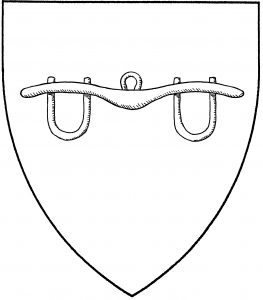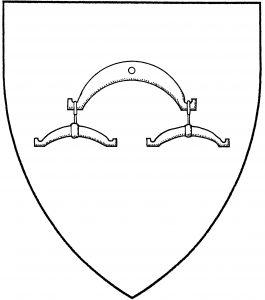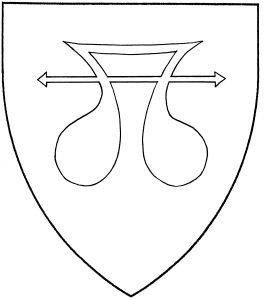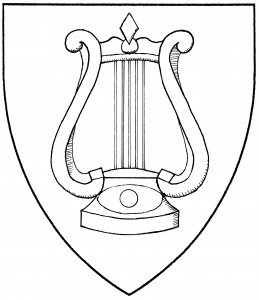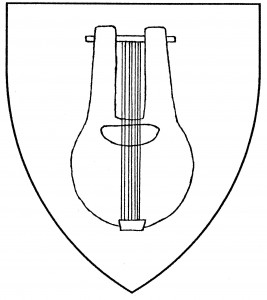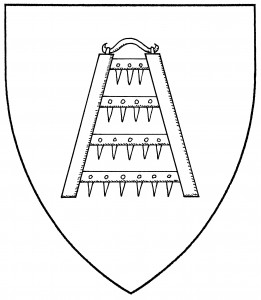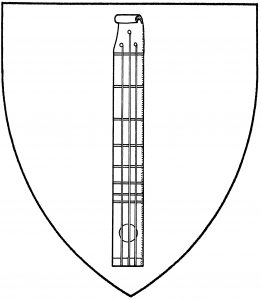
Zither (Accepted)
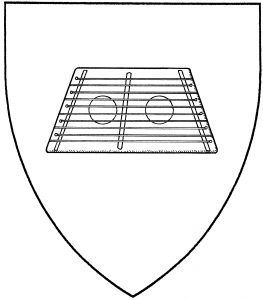
Hammered dulcimer (Accepted)
The zither is a stringed
musical instrument, or rather, a family of instruments, with strings stretched over a flat shallow box. Unlike the harp, the strings were not free-standing; and unlike the lyre, the zither had no yoke. It differed from the
psaltery in that the strings’ notes were determined, not by their length, but by frets, bridges, or finger pressure; it could be played by strumming, plucking with a plectrum, or striking with hammers. Though a period instrument, we’ve found no examples of the zither in medieval heraldry.
One form of zither (in a sense, the generic zither) is a long slender soundbox with three or four strings; it’s found in a fresco in the church of Rynkeby, Denmark, c.1560 [Grove 27:858]. This form evolved into the Swiss “scheitholt”, described in Praetorius’ Syntagma Musica, 1619, and the more ornate “epinette des Vosges” of France, post-period – and eventually to the modern “Appalachian dulcimer”, so-called though not actually a dulcimer. The modern forms are no longer registerable, pending documentation.
The “dulcimer”, in its true sense, is a specific form of zither, a broad box with many strings. It’s a period instrument, shown in a Flemish painting Mary Queen of Heaven c.1485 [Remnant 117]. In period, the dulcimer was always played by hammering; in modern parlance, it’s best to blazon it fully as a “hammered dulcimer”.
All zithers are shown with the strings facing the viewer by default; when blazoned “proper”, they are of brown wood. No heraldic difference is granted between the various kinds of medieval zither.
Miriel d’Estoile bears: Per bend argent and azure, a compass star azure and in bend a feather argent and a fretted zither Or.
Cadwan Galwiddoe of Redmarch bears: Gules, on a bend between two mullets of eight points argent, a ram’s-headed scheitholt sable, detailed gules.
Dulcinea Margarita Teresa Velasquez de Ribera bears as a badge: A hammered dulcimer Or.
